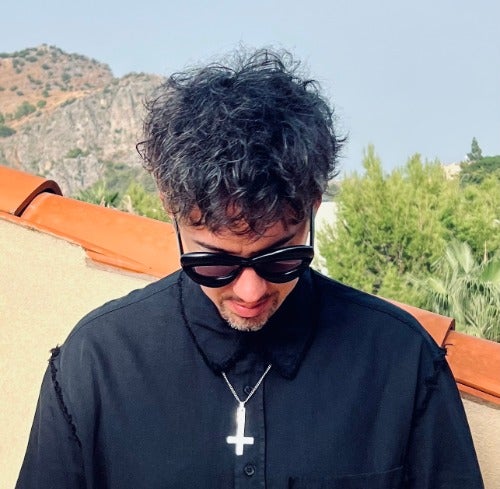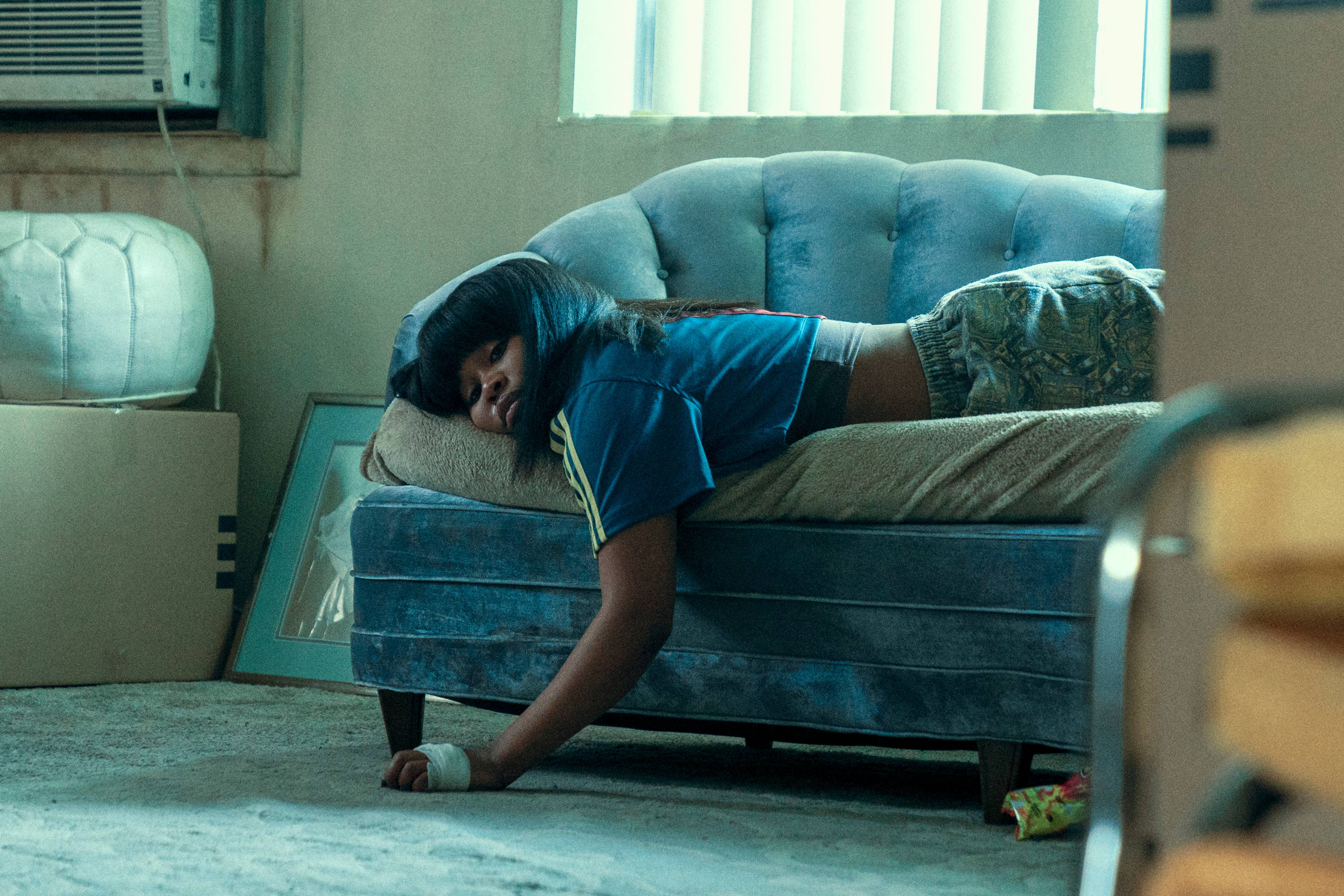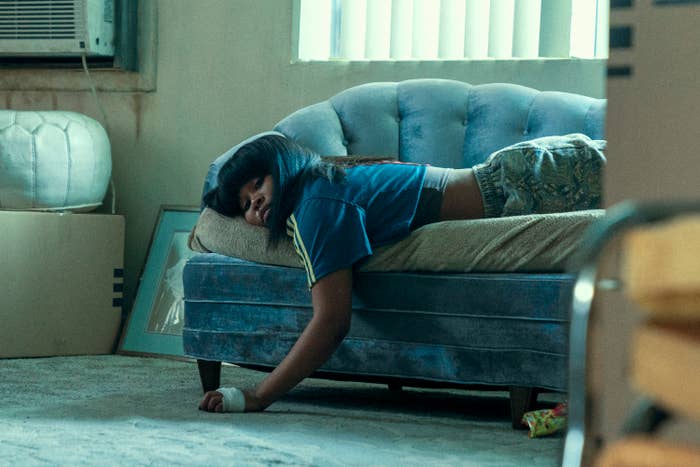
Behind every successful leap from script to screen is a thoughtful production designer, working tirelessly and with great care to ensure the audience is wholly immersed in a world that once existed only in a writer’s imagination.
For Swarm, co-created by Donald Glover and Janine Nabers, production designer Sara K White was tasked with bringing the Atlanta alums’ story to life on a decidedly tight schedule—all while working to establish a believable consistency in main character Dre’s surroundings despite ever-changing locales.
But that’s far from the only unique challenge brought on by this story. As star Dominique Fishback herself told Complex last month, there were therapists on set to help actors and others involved in the show get through the more emotionally difficult scenes.
For further insight, Complex spoke with White, who has also worked on The Flight Attendant and The Wilds, about her own Swarm journey. See our full conversation below.
This conversation has been edited and condensed for clarity.
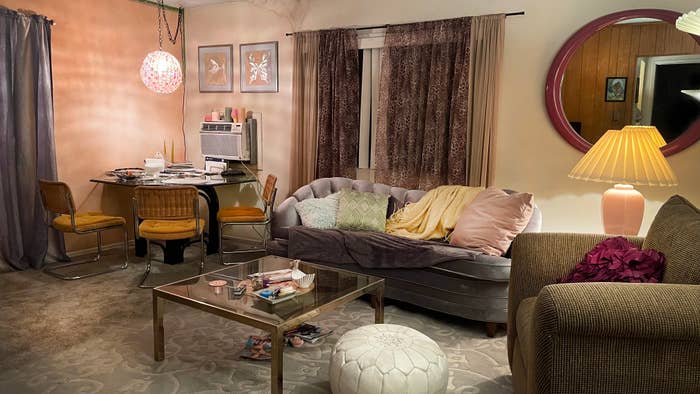
Sara, to start, let’s look back at when you first got involved with the series. How familiar were you with Donald Glover and Janine Nabers’ prior work, namely Atlanta?
I was certainly aware of Atlanta and had watched a few episodes, but while I prepared for my interview on Swarm, I re-binged it all. I loved the mix of authenticity and irreverence in the series. I’d also been aware of Donald’s other work, and what strikes me is the layers of thought that goes into his projects. At the top layer there’s always pure enjoyment, but look deeper, and you’ll always find more, which was also definitely true of Swarm.
As a production designer, what’s the first element of a series or film you like to dive into to start piecing together the environment where these characters will live (or for some in this show, die)?
For any project, I start with developing a feeling for authenticity in each story and character, which can mean very different things for different characters, fantasy or otherwise. For me on Swarm, the apartment where Marissa and Dre live set the tone for the series. How disparate Marissa and Dre’s spaces are set up Dre’s identity and the visual language associated with her. I worked to keep in mind her awkwardly underdeveloped relationship to the world and her habit of fixation to carry me through every one of her spaces and as a balance point for each of the other characters.
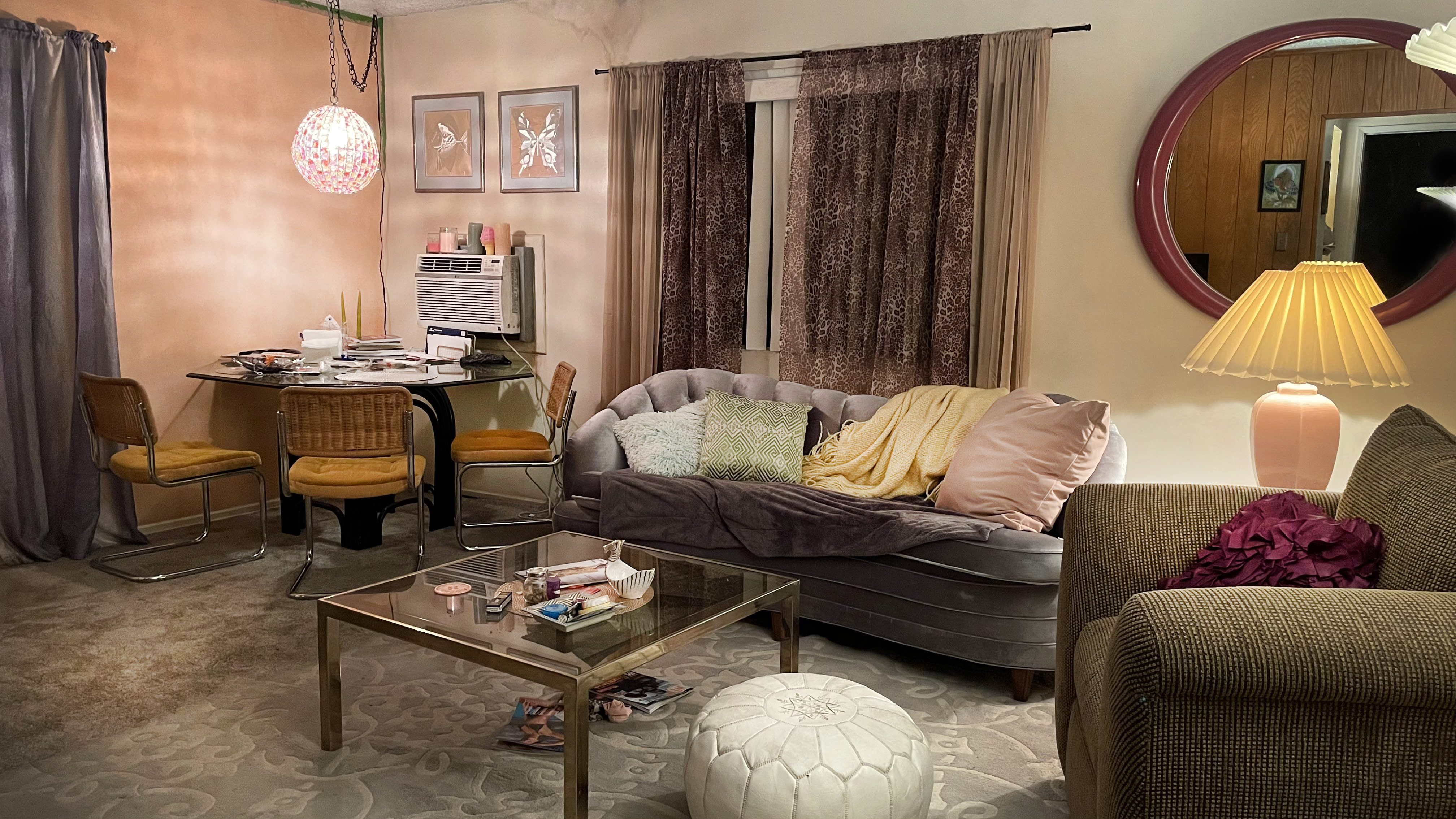
For Swarm character Dre, specifically, viewers are taken on a cross-country journey, which I imagine presents a unique challenge to you as a production designer. How were you able to create consistency in this character’s immediate environment despite the ever-changing locations?
By having a strong point of view for Dre, we could keep balancing the unique places we go to off her. While we did have color themes that progressed through the series, the consistency of Dominique Dawson’s incredible costumes and Drew Daniel’s fantastic camera and lighting allowed production design to be the foil. I could really be authentic to the other characters in the decoration and, because we were complimenting each other, the effect would be consistent even if one of us was taking a unique turn.
From the very first episode, it’s clear that Dre is years deep into a parasocial relationship with her favorite artist, Ni’Jah. Aside from posters and tickets seen in her bedroom at the beginning of the show, what touches did you decide to implement to further drive home not only the extent of this relationship, but its impact on the other relationships in Dre’s life?
Deciding what we would carry from her bedroom into the other spaces we would inhabit was incredibly important. It was a thread we started in the second episode, with Dre’s attempt at recreating her bedroom in the motel with the large Ni’jah poster awkwardly displayed above the bed. That poster traveled with her wherever she went, and we created magazine covers for each episode to stuff in the dashboard of the cars that became her home. The prop we saw most was the string backpack emblazoned with a logo from Ni’jah’s early era. In more ways than one, she held her whole life in that Ni’jah bag.
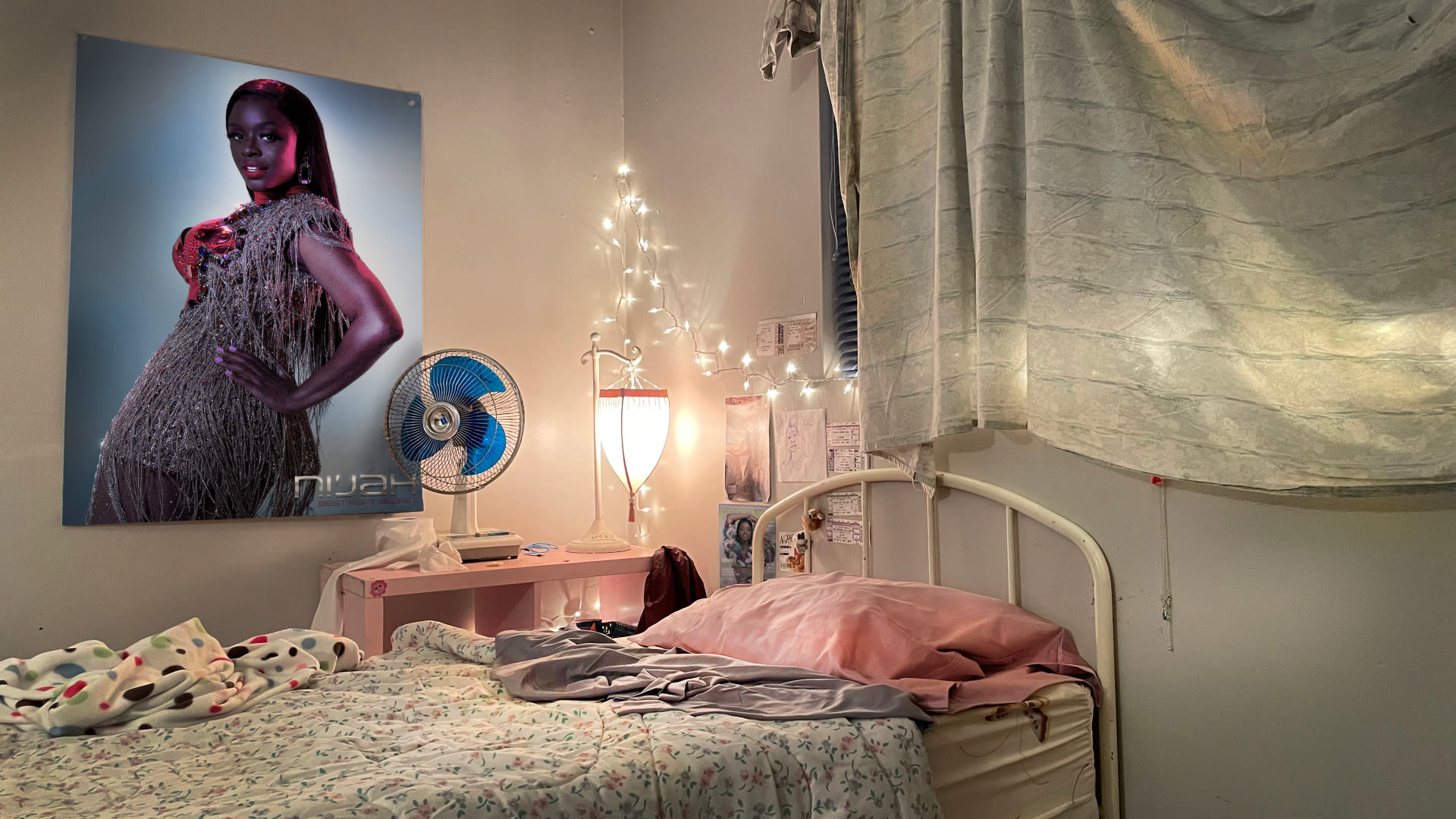
This series, among other feats, captures a very specific type of isolation. Were there any moments during the production where you found yourself particularly moved, or even troubled, by the world these characters were inhabiting?
Oh, almost always! While Dre’s relationship to the world is specifically skewed, no character we showed exemplified “normal,” if such a thing even exists. I loved the way Janine and Donald conceived of all of the characters as multi-layered people. Marissa’s poor choices in men and history with depression are on full display. Dre’s foster parents are obviously no saints, and even Rodney, the YouTuber who is quickly offed in his influencer manse, is complicated by the idea that he doesn’t take seriously the online world that gave him his conspicuous wealth.
But with Rodney, and even Dre, I found myself sympathizing. Being a human is a complicated endeavor, and I love a complicated character. I love investigating what gives me the creeps and exploring how to evoke that feeling in the audience. I feel lucky that as a designer, I get to deeply consider each of the characters when creating their spaces. What troubles me often ends up providing the most inspiration for a space.
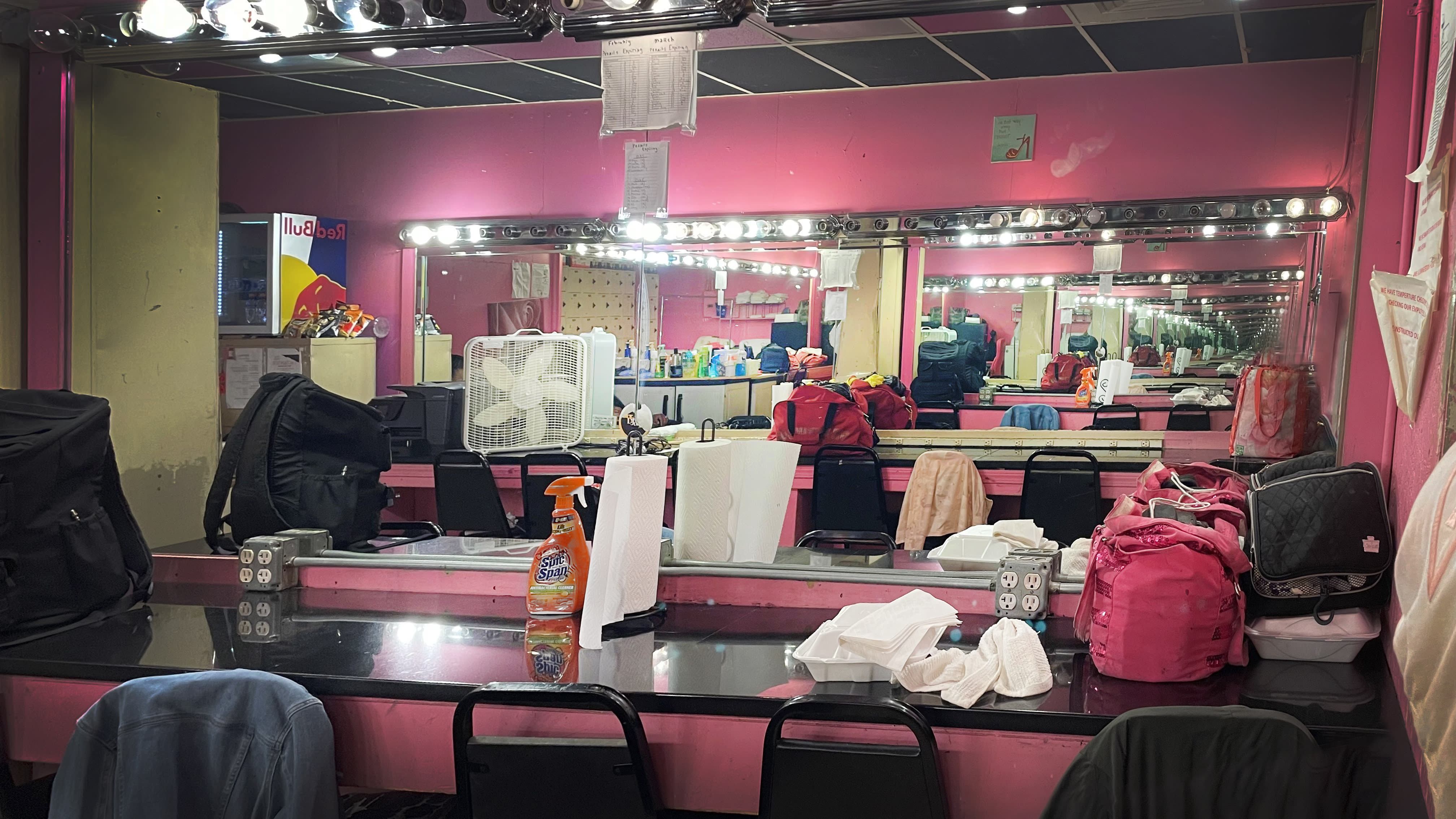
I know that colors were a key aspect of your work on Swarm. How did that change depending on Dre and others she encounters on her multi-state trek?
The palette definitely shifts from the first few episodes where color is bold and at times chaotic. Dre is in a fever dream as she develops a taste for blood. As the story progresses, her confidence in killing is reflected in the simplifying of the palette until the final episode. We bring color back with Rashida’s world and what at first feels warm and friendly turns into a place where Dre’s old habits come back to haunt.
Symmetry, or in some cases the lack thereof, also jumps out as a symptom of Dre’s mental state at any given time. How do you determine when to push these factors to one extreme or another? Are these decisions entirely character-driven?
For me, both symmetry and repetition were really easy ways to visually represent Dre’s perspective—she’s entirely out of kilter with the world and driving, repetitive thoughts propel her through the world. Because we couldn’t build many sets, picking great locations was key. The opportunities to push those factors were more typically scene driven, and we usually found them in the tech scout with the director and DP. We were always discussing how we could line up shots to play with those visual themes.

What did you find most rewarding about this story?
Exploring a seldom-seen character in an inventive show with fantastic collaborators was always a highlight. When moments got tough, I could always lean back on that to keep myself driven.
What did you find most challenging?
We were a small show with a tight production schedule, so keeping ahead of the camera and staying smart in our choices was a challenge. Luckily, my art teams in both LA and Atlanta were incredibly dedicated and inventive, and we were always able to elevate the designs during execution.

For you, what’s the most important facet of top-tier production design? What are some personal favorite production design decisions you’ve seen carried out by your peers and those whose work you’ve admired?
I’m always inspired by bold and surprising choices. Sometimes those choices are made with color, pattern or the layout of a space that plays well with the camera or the action of the scene. Sometimes they are smaller choices—the placement of a momento the character keeps by their bedside that reveals hidden layers of the character. I was lucky to work under designers Inbal Weinberg and Jade Healy when I was starting in the field, and they exemplify that kind of decision making.
To me, ensuring every choice feels thoughtful on the first and especially on the second watch makes design feel elevated. If you’re deepening the world of the characters, supporting the other key creatives, and whispering into the audience’s ear with your work, that’s top-tier design.
What’s next for you after the ongoing success of Swarm?
Right now, I’m planning to collaborate again with director Susanna Fogel, who I’ve had the pleasure of working with a few times. I can’t say much more, but I’m excited about the next opportunities.

Check out Sara K White’s work in Swarm, now streaming all episodes on Prime Video.
